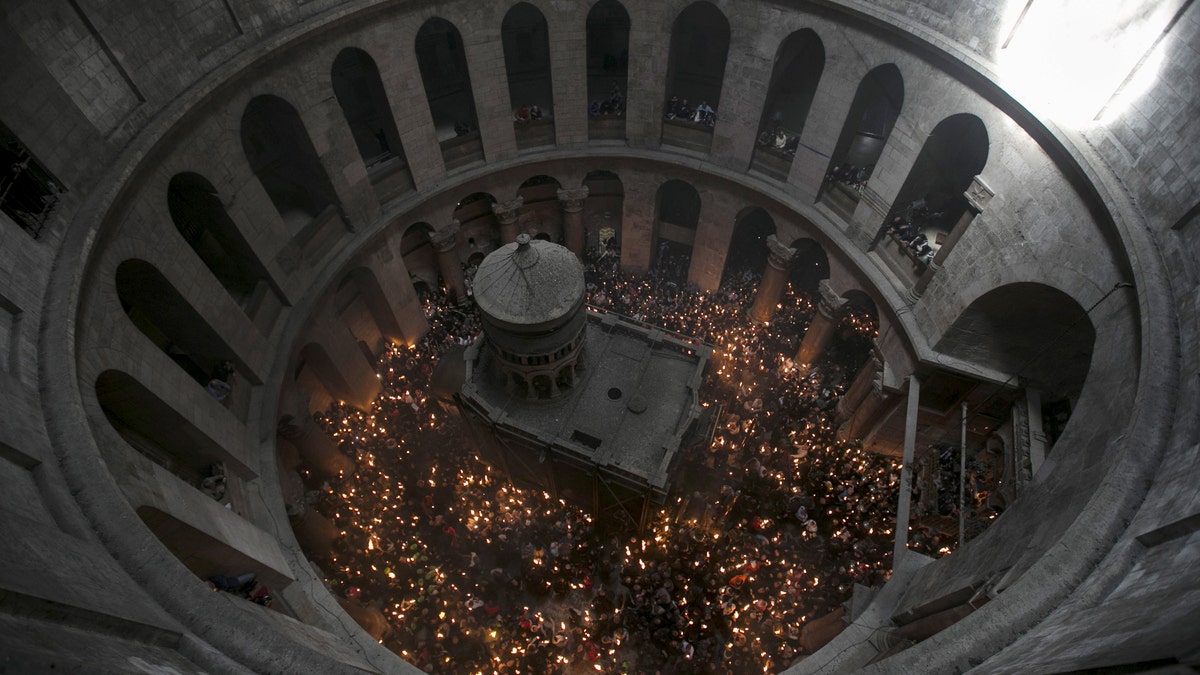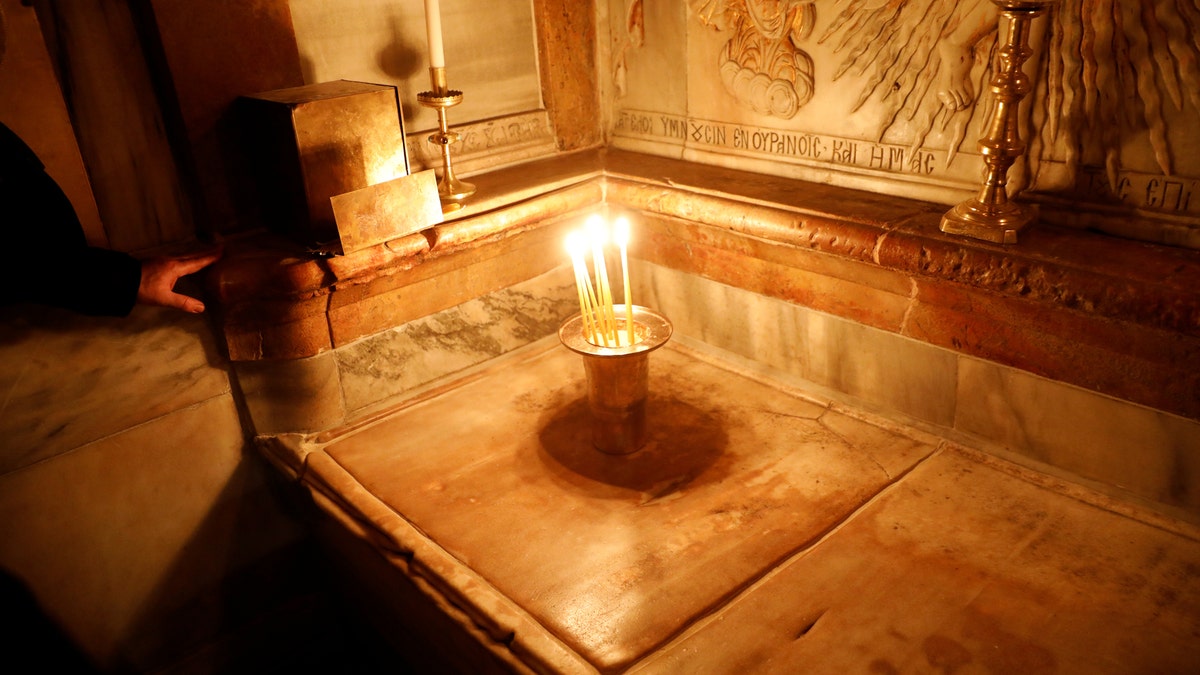
File photo - Worshippers hold candles as they take part in the Christian Orthodox Holy Fire ceremony at the Church of the Holy Sepulchre in Jerusalem's Old City April 11, 2015. (REUTERS/Baz Ratner)
Scientific tests have offered fascinating new insight into the tomb in Jerusalem’s Church of the Holy Sepulchre venerated as the resting place of Jesus Christ.
National Geographic reports that construction materials used on the tomb have been dated to the Roman era. The results of tests provided to the publication confirm that the remains of a limestone cave enshrined in the famous church are the remnants of a tomb found by the Romans 1,700 years ago.
Experts analyzed mortar from the original limestone surface of the tomb and a marble slab that covers it, which they dated to around 345 A.D. Historical accounts indicate that the tomb, which is a limestone shelf or burial bed hewn from the wall of a cave, was discovered by the Romans and enshrined around 326 A.D., according to National Geographic.
CHRIST'S TOMB UNCOVERED: THIS IS WHAT EXPERTS DISCOVERED
The mortar was analyzed at two independent labs using a technique called Optically Stimulated Luminescence, which analyzes when quartz sediment was last exposed to light.

File photo - Candles are placed atop the newly restored tomb, which according to Christian belief is where Jesus's body was anointed and buried, inside the newly restored Edicule, the ancient structure housing the tomb, at the Church of the Holy Sepulchre in Jerusalem's Old City March 20, 2017. (REUTERS/Ronen Zvulun) (REUTERS)
The findings are significant because, up until now, the earliest architectural evidence around the cave complex dated it to the Crusader period, which would make it about 1,000 years old.
Last year, researchers uncovered a stone slab and examined the interior of the tomb. The slab, which has been covered by marble cladding since at least 1555 A.D., was exposed as part of a major restoration project at the church. The original limestone rock surface, or “burial bed,” was found to be intact. Experts also found a broken slab marble incised with a cross resting on the rock surface.
The broken slab provided a key clue to archaeologists, who now believe that it was mortared into place during the fourth-century A.D. This corresponds with the church’s construction by the Roman Emperor Constantine on a site venerated as Christ’s burial place by the local Christian community. Constantine demolished a Roman Temple built by the Emperor Hadrian on the site some 200 years earlier and excavated the rock beneath it to expose the loculus, or burial niche, identified as Christ’s tomb.
CHRIST'S BURIAL SLAB UNCOVERED FOR THE FIRST TIME IN CENTURIES
"Obviously that date is spot-on for whatever Constantine did," says archaeologist Martin Biddle, author of “The Church of the Holy Sepulchre,” told National Geographic. "That's very remarkable."
The Church built by Constantine was destroyed by the Fatimid Caliphate in 1009 and rebuilt in the middle of the 11th century, according to National Geographic.
The “burial bed” was hewn from the side of a limestone cave following Christ’s crucifixion, according to Christian tradition. Christ’s resurrection from the dead is a core tenet of Christian belief – the Gospels say that the tomb was found to be empty by those who visited it a few days after the crucifixion.
LOST ROMAN CITY THAT WAS HOME TO JESUS' APOSTLES FOUND, SAY ARCHAEOLOGISTS
The Gospels say that Jesus was buried outside Jerusalem’s city walls, which was in keeping with Jewish tradition, and near Golgotha, the site of his crucifixion. Jerusalem’s walls were later expanded to place Golgotha and the tomb within the city.
During the renovation project by the National Technical University of Athens, experts also confirmed the existence of the original limestone cave walls inside the Edicule, the early 19th-century structure within the Church of the Holy Sepulchre that houses the tomb.
Chief Scientific Supervisor Antonia Moropoulou, who led the restoration, took a number of mortar samples from different parts of the Edicule. Mortar samples taken from the southern wall of the cave, for example, were dated to 335 and 1570, according to National Geographic, indicating construction work began during the Roman era and was later restored. Mortar from the tomb’s entrance was dated to the 11th century, corresponding with reconstruction after its destruction by the Fatimids.
EXPERTS HUNT FOR BIBLICAL TABERNACLE THAT HOUSED THE ARK OF THE COVENANT
Fredrik Hiebert, archaeologist-in-residence at the National Geographic Society, told Fox News that the latest findings shed important light on the famous site. "This discovery is significant for two important reasons: first, its fourth century date suggests that Christians from around the world have revered this exact site as the location of the resurrection for more than 1700 years; but just as significant, is the fact that this lower marble slab is a unique piece of intact architecture from the original church and withstood the vicissitudes of destruction and reconstruction of the shrine over many centuries," he explained, via email.
Hiebert is also curator of the new exhibition, "Tomb of Christ: The Church of the Holy Sepulchre Experience," at the National Geographic Museum in Washington, D.C.
Follow James Rogers on Twitter @jamesjrogers
